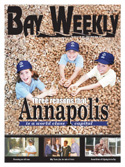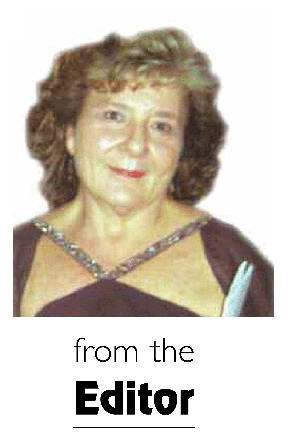
Volume XVII, Issue 43 ~ October 22 - October 28, 2009
Home \\ Correspondence \\ from the Editor \\ Submit a Letter \\ Classifieds \\ Contact Us
Dining Guide \\ Home & Garden Guide \\ Archives \\ Distribution Locations \\ Advertising
![]()

 By the Letter —
By the Letter —
Short stories about the words you’re reading
Thank you for reading.
We’ve made some changes that we hope make reading easier and more pleasant for you.
Have you noticed?
It’s nothing very dramatic — though General Manager Alex Knoll is tinkering at the cellular level of reading.
No, we’re not doing the kind of makeover that, across the country over the last decade, surprises sleepy daily newspaper readers by bringing a stranger to the doorstep and breakfast table. The Sun, for one, has been through so many cosmetic surgeries that it’s a kind of Michael Jackson of journalism.
We’re not even going as far as The Washington Post, which redesigned its make-up this Monday, and looks pretty good for the change — actually lots of small changes.
It’s type where we’ve made our change.
As long as we’ve had written words (as opposed to pictographs), we’ve had letters. Type is much newer, especially in the Western world, where it dates back to the 15th century, when Johannes Gutenberg made a printing press, set a plate of metal letters and gave Europe its first printed book.
From that ancestor, type families have multiplied nearly as widely as human families from Adam and Eve.
To save space without losing readability, especially in the dense columns of calendar and classifieds, Knoll has replaced one family of type with another.
Gill Sans is the former family. Univers is the new family.
Because each family of type has defining characteristics just like each human family has genetic characterictics, some are more readable than others at small sizes. Univers at seven points lets us pack more information into a clearer line than Gill Sans at eight and half or even nine points.
So Univers is the type you’re now reading in the back, entertainment half of Bay Weekly, which includes calendar, movies reviews, Free Will Astrology, News of the Weird and classifieds. You’ll also notice it in the headlines, subheads and pullouts of many stories.
In harnessing it to many purposes, we’re following the advice of newspaper designers to stick to a few families. We can do that because families have many fonts, as the children of type families are called. Univers has dozens of fonts (such as Condensed, which is one of the fonts we use, Ultra Light or Extended Heavy).
All the families also range through such styles as bold, italic or shadow.
Type families are means to an end, reading, and we hope you’re happy reading the retyped Bay Weekly.
They’re hard workers, but they’re also works of art. They even have creators. Gill Sans was created early in the 20th century by Eric Gill. Univers was created mid century by Adrian Frutiger. The last century was one of the great ages of typography; in the 20th century, type evolved from hot type, which was metal poured into molds and hand set letter by letter in racks; to cold type, where typewriter-like machines repeated a letter’s impression; to electronic type, which I’m not even going to try to explain. With each change of technology, each family had to be remade in new ways. And, of course, new families were still being drawn.
Have you ever thought so much about the shapes of the letters you’re reading?
You have if you’re Valerie Lester, whose byline you’ll remember from Bay Weekly pages. Valerie prefers long stories to our shorties; she’s now busy writing her third nonfiction book, and it’s all about the shapes of letters — particularly those made by Giambattista Bodoni, an 18th century Italian printer who created the famous type family that bears his name and is in abundant use today.
A progress report on her book makes a nice illustration of how centuries, and technologies, mix in when for those of us who put words into type in this 21st century:
“I’ve been corresponding with a great typographic historian in England,” Lester writes, “and he’s given me some good advice on what to read. One of the books, Memorie aneddote per servire un giorno, about Bodoni has been scanned into Google books, and I was able to download it ...
“My Bodoni mentor, Sumner Stone, the man who brought Bodoni to your computer, with whom I’ve been corresponding electronically for over a year, flew in on Wednesday …”
Enough about type. Onto the stories — which are set in New Century Schoolbook. But that’s another story ...
© COPYRIGHT 2009 by New Bay Enterprises, Inc. All rights reserved.